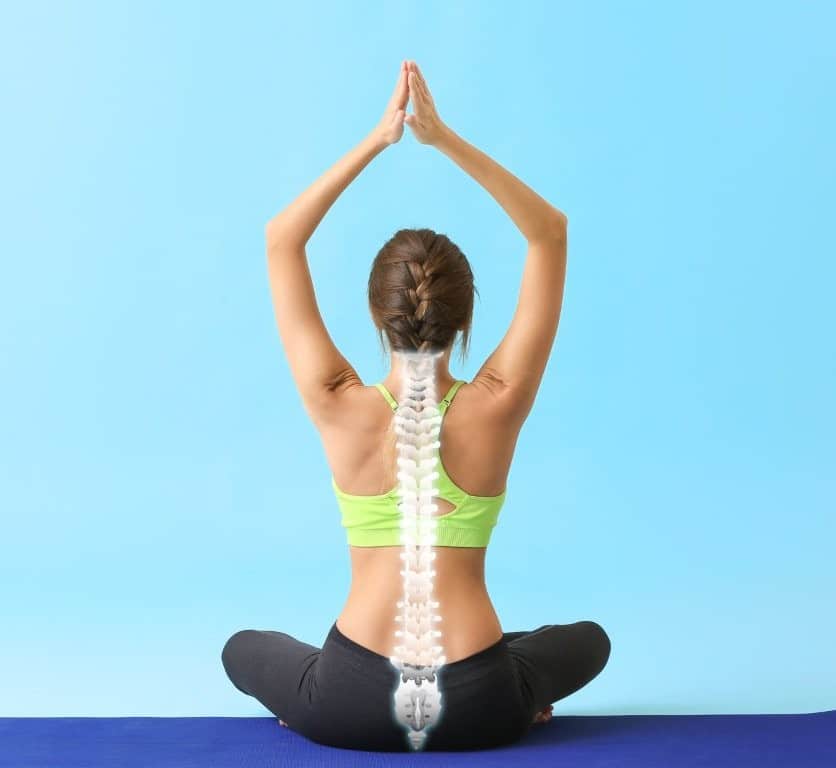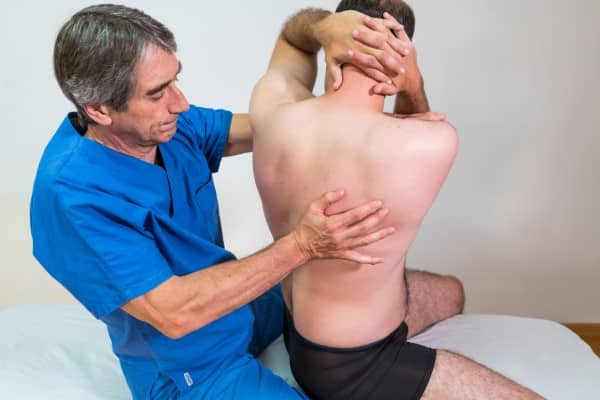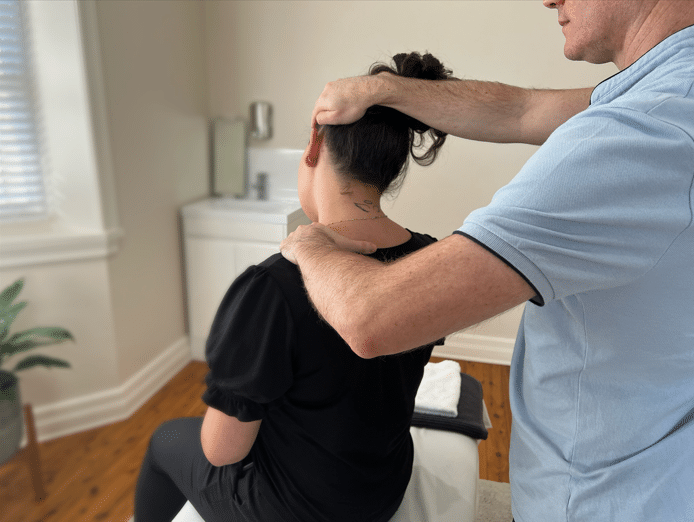- 02 9712 1736
- [email protected]
- 212 Great North Road, Five Dock, NSW 2046
- Open 7 days a week
Your middle back has been bothering you lately, and you’re wondering what’s going on. Middle back pain affects your thoracic spine – that’s the area between your shoulder blades and the bottom of your rib cage. Recent medical research shows this type of pain is more common than you might think, affecting 15% to 35% of adults each year. Understanding what causes your middle back pain can help you find the right treatment and get back to feeling your best.

Your posture plays a huge role in middle back pain. When you slouch at your computer or hunch over your phone, you’re putting extra stress on your spine. Your thoracic spine has 12 vertebrae that work with your ribs to protect your heart and lungs. Poor posture changes how these bones align, which can cause pain in the muscles, ligaments, and joints.
Recent studies show that spending long hours sitting creates repeated stress on your middle back. This is especially true if you’re using a backpack regularly or working at a desk all day. Your muscles get tired from holding you up in awkward positions, leading to pain and stiffness.
Research from 2023 confirms what healthcare providers have long suspected – carrying extra weight increases your risk of back pain. When you gain weight, especially around your middle, it changes how your spine curves. This puts extra pressure on your vertebrae and the cushiony discs between them.
A major study found that weight gain leads to a greater risk of developing chronic back pain. The more weight you gain, the stronger your risk becomes. Your spine has to work harder to support the extra pounds, which can cause the muscles around your middle back to become strained and painful.
Your middle back pain might come from simply overdoing it. Lifting heavy objects incorrectly or repeatedly doing the same motions can strain your back muscles. This is the most common cause of thoracic spine pain, according to recent medical research.
When you injure a muscle in your middle back, you might feel a sharp pain or a dull ache. The pain might get worse when you move certain ways or take deep breaths. Your muscles and the connective tissue around them need time to heal from this type of injury.
Several types of arthritis can affect your middle back. The small joints in your spine, called facet joints, can become inflamed and painful. This happens more often as you get older, but it can affect younger people too.
Osteoporosis is another concern, especially if you’re over 50. This condition makes your bones weaker and more likely to break. Your thoracic spine is a common place for compression fractures when you have osteoporosis, which can cause sudden, severe pain.
While most middle back pain comes from everyday causes, sometimes it signals something more serious. Your thoracic spine is more likely than other parts of your back to have serious problems like infections, tumors, or spinal cord compression.
Research shows that middle back pain should be taken seriously, especially if you have certain warning signs. These include severe pain that doesn’t improve with rest, fever, unexpected weight loss, or pain that gets worse at night.
You should see a healthcare provider if your middle back pain is severe, constant, or comes with other symptoms like fever or numbness. Recent studies emphasize that thoracic spine pain needs careful evaluation because it’s more likely to have serious underlying causes than neck or lower back pain.
If your pain started after an injury, is getting worse instead of better, or is affecting your daily activities, don’t wait to get help. Early treatment often leads to better outcomes and can prevent your pain from becoming chronic.
Today’s treatment for middle back pain focuses on addressing the root cause of your symptoms. Physical therapy is one of the most effective treatments, helping to improve your posture, strengthen your muscles, and increase your flexibility.
If you’re carrying extra weight, research shows that losing even a modest amount can significantly reduce your back pain. Weight loss programs that include both diet and exercise have been shown to help people with chronic back pain feel better and function more normally.
Simple treatments you can try at home include using ice or heat, taking over-the-counter pain relievers like ibuprofen, and doing gentle stretches. However, the key to long-term relief is often changing the habits that caused your pain in the first place.

Your middle back pain most likely comes from everyday causes like poor posture, muscle strain, or carrying extra weight. Recent medical research shows these factors are becoming more common as our lifestyles become more sedentary. The good news is that most middle back pain responds well to conservative treatment, especially when you address underlying issues like posture and weight management. However, because thoracic spine pain can sometimes signal serious problems, it’s important to get proper evaluation and treatment from healthcare professionals who understand the unique challenges of middle back pain.

Scott has more than 20 years of clinical experience as a movement expert and musculoskeletal health professional. His thorough understanding of how pain affects your spine, joints, muscles, and total well-being is the result of significant academic study and many many years of clinical experience. Scott’s real interest in movement mechanics enables him to develop individualised care plans that summarise complex problems into clear, simple treatments, leading to quicker healing times. His friendly, attentive approach ensures that you not only comprehend but also feel supported throughout your treatment journey, allowing you to return to the things you like with restored confidence and vitality.


About
Five Dock Osteopathic & Chiropractic is located in Canada Bay, in Sydney’s Inner West. Servicing suburbs including Burwood, Croydon, Drummoyne, Five Dock, Haberfield, Concord, Abbotsford, Chiswick, Leichhardt, Wareemba, Russell Lea, Summer Hill, Strathfield.
Clinic hours
Monday, Tuesday, Thursday 7AM – 7PM
Wednesday, Friday 7AM – 6PM
Saturday 7AM – 2PM
Sunday 8AM – 2PM
Contact details